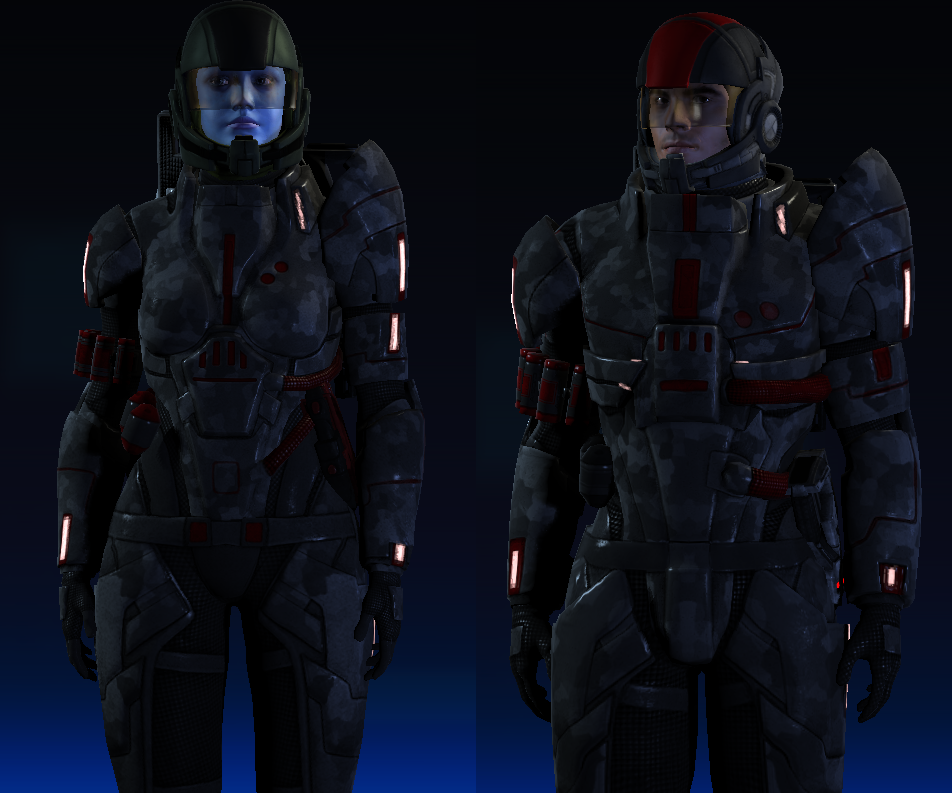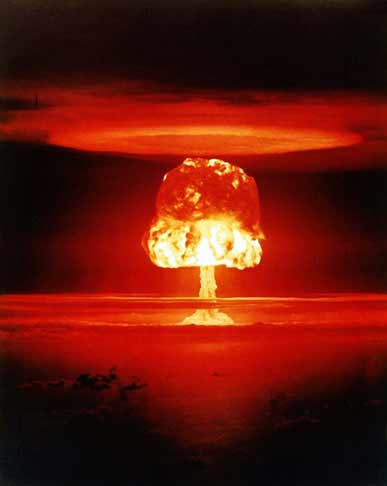Where did it all go wrong?
Here’s where:
Ok, wrong is probably too strong a word, but Inquisitor was a huge opportunity for both Games Workshop and Warhammer 40k to expand that was missed. For those of you who don’t know it Inquisitor (or =I=) was released in 2001 as a hybrid skirmish RPG game, a narrative combat game, written by Gav Thorpe. It’s tagline was “Everything you’ve been told is a lie” and nominally focussed on the internal wars plaguing the Inquisition.
And the artwork was amazing.
Players controlled only around four or five models, as there was a much more detailed weapon and damage system along with ammo, bleeding and the like involved. It was Necromunda meets D&D.
It’s biggest draw was that instead of playing front line soldiers for the most part, the players took teams (or warbands) of operatives into urban areas, ancient ruins and the like to vie with the other players for dark secrets of the 40k universe.
Players could be Inquisitors, Tech Priests, Assassins, Arbites, Rogue Traders, Astartes, renegades, gunslingers, xenos and anything in between. The series was launched with a line of models (including one of Eisenhorn himself) in 54mm scale…
54mm?
Wait, what?
This, in my opinion, was a HUGE mistake.
1. Most importantly, who has enough terrain to go with 54mm scale models? Nobody aside from the few who play the large scale Old West games, that’s who. It’s large, harder to make and store, and given the narrative nature of the game you really need a lot of it.
2. Characters were as customisable as you could get. Want a Marine twin wielding assault cannons? You can do it. Want a female Inquisitor in carapace armour with an Eldar long-rifle and a plasma pistol? Sure! But I hope you’re good a sculpting as the range is limited…
3. Which leads on to the next point – all metal models means they were pricey, so people were loath to try and convert them as it was a big dollar investment to mess up. Then they stopped making any more designs.
4. While some of the sculpts were great, some were… less good shall we say (they're still available to see on the main GW site). Not bad models by any means, but the sculptors clearly hadn’t got the hang of the scale yet.
Before I continue I need to digress into a quick discussion of GW’s current nemesis, Privateer Press. Those familiar with Warmachine and Hordes know that when you buy a model for your army – that’s who or what it is. Sorcha is always Sorcha. PP had a sister line to WarmaHordes, the Iron Kingdoms series, designed for the RPG of the same name. These miniatures were more based around archetypes of their world, as well as a few characters. However due to the nature of WarmaHordes it was generally not easy to bring the IK minis into the wargame. I haven’t seen PP release a new miniature for the IK line in quite some time now.
Warhammer 40k suffers no such problem. GW as a company encourages “counts as”, parts swapping and making your own characters. Why they didn’t release =I= as a 28mm line still mystifies me. Tau had just come out, and Codex: Witch Hunters was not far off so would have been well into its design phase. They released an army based around the Inquisition and a game based around the Inquisition, but didn’t make them compatible… though they did re-do the Death Cult Assassins and Daemonhosts in 28mm later.
Think of the modelling and gaming possibilities of it had =I= been a 28mm game. New terrain (compatible with 40k, =I= and Necromunda), new models (character models for collectors, customising your HQs in 40k) and so on. It would have enabled them to explore the unlit corners of 40k with new models and units.
There was much discussion at the time of it being a pre-cursor or testbed for a 40k RPG, which as we know didn’t materialise until much later with Dark Heresy (which, as a relevant aside, I’ve seen people discuss which non-GW manufacturers to get models from to represent their characters).
This was, however, in some ways what many consider the darkest days of GW, with the soon to be purging of Specialist Games, the gutting of Codexes and the turn from ‘veterans’ to the younger market. For a variety of reasons I didn’t see / don’t remember much of this period of GW history, partly because I didn’t buy anything GW for a number of years – make of that what you will – but my main point is not directly about corporate policy, though it no doubt directed much of what we are seening now.
The lack of any real miniatures, by which I mean ones not designed entirely for the tabletop, has left GW hugely vulnerable to their competitors and lost a market share (though it may well be a smaller one, it’s still lost).
Warhammer Fantasy is the best illustration for this. People still play Dungeons and Dragons and the like. People need miniatures for it. GW used to make minis for it, and when they stopped doing it officially you could still buy an Orc Warboss blister or a couple of Mummies to represent just that. A while back when I was building my Heroquest set using contemporary miniatures I noticed a funny thing – my hordes of troops were GW but all the characters, the players and enemy bosses, were all from other company’s lines. This wasn’t out of personal preference, but a combination of $ value and availability.
Take the prototypical two main villains – the Lich Lord and Gargoyle. The first I could maybe kitbash with some skeleton parts and an Empire Wizard kit (and have a lot of stuff left over), the second I’d need to use something totally different and still do a lot of work. Or, I could just go to Reaper and get them both for less.
Now, I’m not saying that GW should start making a massive character line to compete with Reaper here, but when their main sci-fi game extols the virtues of a huge and varied universe there’s not many options out there unless you wear Power Armour.
To leave this topic for a moment I’ll head back to a point I raised before – the canning of Specialist Games. I remember going to the opening of the first Games Workshop in Australia, and standing in line for hours to get that much prized Deathwing Terminator boxset. I also remember the wonderment at seeing all the games there – Warhammer, 40k, Space Hulk, Epic, Talisman, Man ‘o’ War, Blood Bowl…
Yes, the ranges are better and bigger now so there obviously isn’t going to be the same amount of shelf space as there was back then, but let me tell you a story of Space Hulk.
When Space Hulk 3rd edition was released there was much rejoicing, and every time I went in there were people playing it, and the stack of box sets they had gradually got smaller and smaller. Then one day the last box was sold and nobody ever played Space Hulk in the store again.
Why? Because of a corporate mandate that unless the game is currently for sale in that store it cannot be played. Battle Bunkers are exempt from this, but not every store is a bunker. The manager explained that it would be unfair for someone to come in, see people playing a game and not be able to buy it.
For a limited edition like Space Hulk I can see the reasoning, but for a game like Epic or Blood Bowl where they can still order the game in to the store? Idiocy.
House of Paincakes recently had an article up discussing the importance of Specialist Games for getting new players involved in the hobby. I know my brother and I played more games of Ultra Marines than Rogue Trader back in the day, and when I went to NaSGuL I usually played Space Hulk or Blood Bowl.
Now, somewhat older and slightly wiser, Specialist Games provide a great thing – an alternate way to get a 40k fix without playing 40k. I can play a couple of missions of Space Hulk in an afternoon, including set up and teardown. Blood Bowl is timed, and Aeronautica Imperialis has limited turns.
We all have ‘off’ days with 40k. Maybe we’ve hit a funk list design, a losing streak’s rocked our confidence, or a game with That Guy’s sapped our enthusiasm. But we still want to play a game. Big Jim has given us Kill Zone, but I don’t rate my chances of getting a game of that in at a GW store. The options are to play anyway, or not play at all.
At a non-GW store the options are much greater… and a lot of them aren’t Games Workshop. WarmaHordes, Infinity, Malifaux, Dystopian Wars, Flames of War, Incursion and so on all beckon to sate the alternate playstyle bug.
Games Workshop’s discarding of both their Specialist Games and non-army based miniatures has come back to bite them, as if you don’t want to play a big game or paint a unit your options are slim. Slim, that is, unless you look anywhere else.
What would I have done / What should GW do?
Obviously I don’t know their corporate strategy, and I’m basing this off my personal opinions not a sound economic foundation here, so this is geared towards that end of the discussion.
Firstly, get in my time machine….
Secondly, put on my robe and wizard hat…
Thirdly, go back to the end of second edition…
Second Edition was, at the end, a bloated, convoluted, time consuming mass.
This is what a game of 2nd ed looked like, but with piles and piles of books everywhere.
It was a skirmish game playing at a full scale battle simulator. It drastically needed an overhaul to remain a viable system, no argument there. I personally would have split the game off into three separate, but interchangeable and fundamentally the same rulesets:
40k: Kill Team – 100 to 400pts – a game more like 2nd ed and Rogue Trader (or Big Jim’s Kill Team), with individual move rates, more variety of weapons and customisation.
40k: Battlezone – 750 to 2500pts – what we know as 40k today. It has issues, but works well for the most part. The main game.
40k: Apocalypse – 3000pts + - same as now.
Necromunda and Inquisitor would have the same scaling to each other, so you could play all the same characters and cross them over between games. The key thing here is that this wouldn’t have any effect on the main game, but would allow new players to get their feet wet more easily with a ruleset designed to be played at pocket money level, and give veterans and backgroundophiles more to chew on.
For releasing the miniatures it would provide not only more stuff for painters, but a constant stream of new units and upgrades to the main game (and give White Dwarf actual content outside the LotR articles). Those who remember the ‘glory days’ of White Dwarf oft recall that instead of the ‘splash releases’ we get now, there was a much more constant stream of units coming out.
As an example when the Razorback first appeared it wasn’t in a new Codex, it was in White Dwarf with some blurb, it’s stats and the new model on the shelf.
With my idea above it would mean that this month there would, for example, be a new model available (limited on shelves that a month, then direct only) the K’ruthian Marksman. It would list his background, show off the model a bit and give stats for Inquisimunda (a deadly underhive mercenary caste on the fringes of the Ultima Segmentum) and 40k stats (recruitable by Radical Inquisitors, Renegade Guard and Chaos Factions as a unit attachment).
Rather than having the meta game changing every couple of months with each new book, there would be a constant flux as new units pop up (and they’re cheap to add with small sizes), so people can try new things without spending huge amounts of money. With a smaller game actually being supported in store it would open up the opportunities for some crazy things like twenty warbands brought in from =I= facing off against a massive Chaos army commanded by the Inquisitor’s arch nemesis in an Apocalypse game!
Sure you could do something like that now, but what’s the bet the generic henchmen would be played by Imperial Guardsmen and the battle wouldn’t have much effect on anyone’s multi-player campaigns?
Games workshop is moving in the right direction with Finecast and the recent Storm of Chaos releases. Finecast gives them a better medium over metal for modelling and converting, while the single character plastics for the sorcerers are fantastic. All they need now is to do the same thing for 40k, and expand upon the offerings (for both games) beyond what is allowed strictly in the main games.
There's no model for a Techpriest, none for a Hrud, an Eldar Mercenary, or even a Rogue Trader. Wouldn't the 40k world and the GW name be enhanced by their making more of the rich background available to play on the table?
I think so.





































